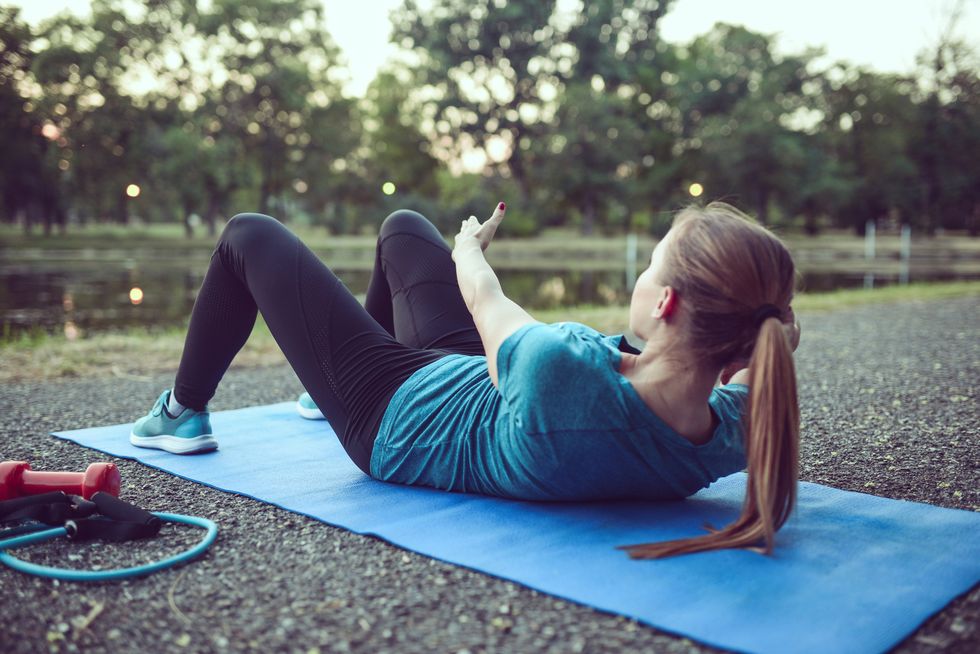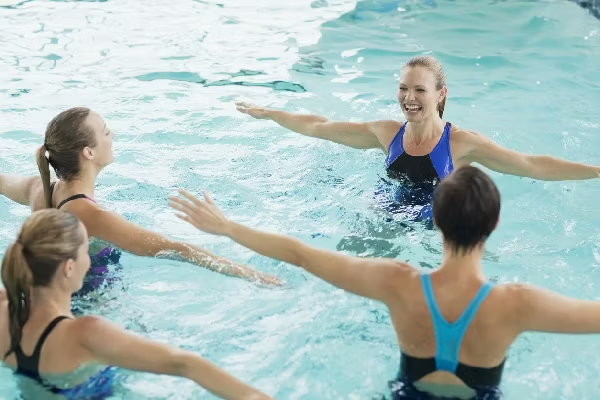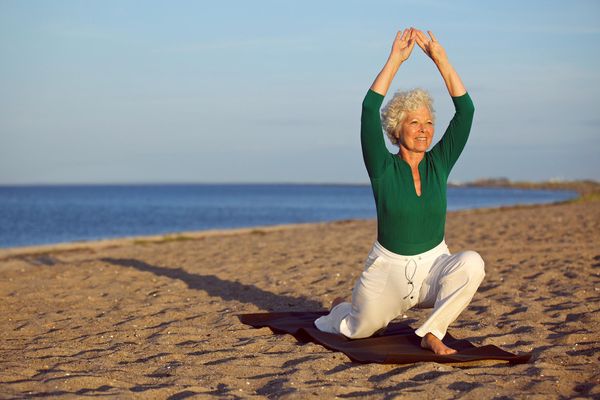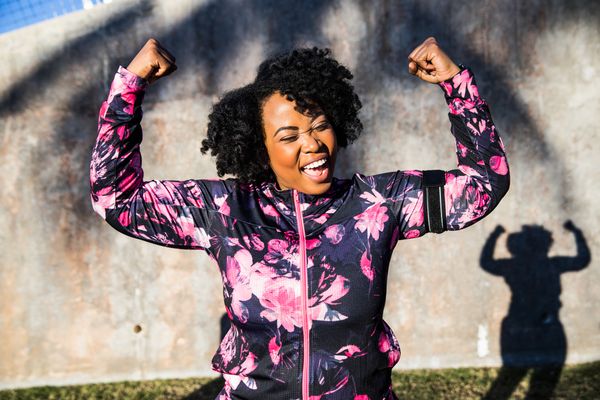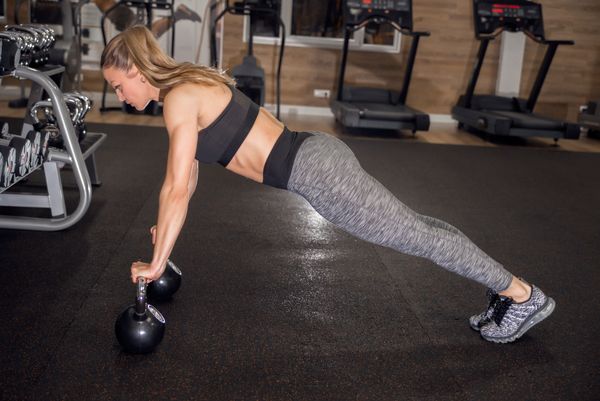This is usually the month when fitness clubs are crowded with new exercisers as well as current members who've pledged to increase their workout frequency. Financial realities, however, may short-circuit some of those good intentions this year.
"With the economic issues that are going on, a lot of people are cutting back on personal training sessions and gym memberships," says Ashley Marriott, a Los Angeles trainer certified by the National Academy of Sports Medicine. Exercise services such as gyms and trainers "are usually the first thing to go out of the budget," she adds.
While many women go to the gym frequently and benefit from the regular physical activity they get there, others don't use their memberships enough to make them worth keeping. Yet, being physically active is definitely a must-do for your health and well-being.
You can start a fitness program, or continue being active, without spending a lot of money. These budget-friendly approaches will help you increase your physical activity, build strength and burn calories for little or no cost:
1. Trade the gym for your home or workplace. By moving activity to your everyday environment, you gain time flexibility with no expense. Think small sessions—for 5 or 10 minutes—three or more times on most days. When TV commercials come on, get up and walk briskly or jog around the room or in place for a few minutes. (In northern areas, this will also help warm you up in winter!) Take short walks on your lunch hour, indoors or outside. Even a two-minute walk break will add to your physical activity level. For other ways to squeeze exercise into small bits of time for free, check out this advice.
You don't need expensive equipment or lots of space to make a home or office gym work for you. For $10 or less, you can gain strength-building resistance with exercise tubes, bands or weighted hand-held balls. These small items can be kept nearby easily, under a table or desk, so they're available when you need them. Use a stability ball (55 centimeters or larger) for your core, back and gluteal muscles, says Marriott, who is coauthor (with Marc L. Paulsen, MD) of Dump Your Trainer and creator of a series of dance fitness DVDs. For added cardiovascular work, she advises lifting a small medicine ball (4 pounds is a popular size for women) overhead while doing squats. Both balls can be purchased for under $20.
Use this self-assessment test for endurance to judge what level of exercise intensity is right for you.
2. Focus on free classes. For more structure and companionship than you can get by working out at home, look for free or low-cost classes and exercise groups near you. Athletic shoe stores, public recreation centers, local newspapers, community Web sites, bulletin boards and colleges are all good sources of information. "We've seen an increase in beginner runners who are looking to stay fit without the gym," says Valerie McLean, owner of three Trak Shak running stores in Birmingham, Alabama. The stores connect runners with programs and groups that fit their experience levels.
Adult night schools in many areas offer inexpensive classes in yoga, Pilates, dance, aerobics, tennis, martial arts, swimming and more. Some offer discounts for seniors. Check on available classes now—many night schools start new sessions in late January.
3. Count your steps. One of the least expensive ways to boost your fitness is also one of the most effective: start wearing a step counter, or pedometer. This little device records the number of steps you take each day. Watching those steps mount up motivates you to move more. (Most of us think we're more active than we really are, so you're likely to be surprised at how low your step count is when you start.)
Research shows that people who wear pedometers increase and sustain their activity levels over time. To get started, clip on a pedometer (good ones are available for $15 to $25), note your step counts for a few days, then figure your daily average. Aim to increase that number by 500 steps. When that becomes your norm, add another 500 steps to your daily goal, and so on, until you've reached 10,000 or more steps each day.
Every step you take counts toward your fitness, whether you're officially exercising or simply going about daily activities. You have many free opportunities to increase your daily step count: Walk the aisles of the supermarket or big-box store before you start shopping; do the same in libraries. At work or school, take the long way to the cafeteria, photocopier, mail room or lecture halls. If time allows, walk between airport terminals instead of riding.
4. Make ordinary moments count. You can build physical activity for free into even the most crowded schedule. "When you brush your teeth, do a set of 20 to 25 squats, as your fitness permits," says Shirley Archer, 2008 IDEA Fitness Instructor of the Year and author of Fitness 9 to 5: Easy Exercises for the Working Week. After brushing, do one set of push-ups at the sink and you'll improve lower and upper body tone, she adds.
5. Rediscover the great outdoors. Some of the best exercise locations are free and beautiful. When weather permits, head outside for physical activity. Parks, outdoor tracks and walking trails all add interest and help make the time pass more quickly. Walking around the neighborhood (when safe) can break the monotony that often accompanies indoor exercise. To find outdoor trails where you can walk, run, bike, use a wheelchair or even inline skate in your area, go to https://www.traillink.com/TrailSearch.aspx.
6. Use what you have. Some household items can do double duty as no-cost fitness equipment. For a step aerobics boost, use that sturdy one-step stepstool from your kitchen; step on and off to lively music while wearing good athletic shoes. Instead of buying hand-held weights, lift cans of beans, condensed soups and milk jugs filled with water or sand (be sure those caps are on tightly and seal them with duct tape!). Any well-balanced object that can be held easily will function as a light beginner weight, including tools, books or tied stacks of DVDs.
7. Take advantage of peer pressure. Exercising with someone else can help you keep to your physical activity plan with no expense. "You're far more likely to stick to it if you make a commitment with another person," Archer says. Set up a regular walking schedule with friends or coworkers, meet up with other stroller-pushing moms (brisk walking while pushing a stroller increases calories burned by about 20 percent) or find a neighbor who wants to be your exercise buddy for local jogs. "Promises to pets work, too," adds Archer, who suggests you commit to walking your dog daily.
8. Break exercise boredom cheaply. When you tire of the same routine, turn on the TV. You'll find at-home exercise instruction for all levels available free as part of your subscription on some cable television systems (check with your provider). Libraries are a great resource for free fitness DVDs and music CDs to add variety and keep you moving. Online, the American Council on Exercise has a free library of descriptive and video exercises for every area of your body.
9. Look for bargains. If you're thinking of joining a gym, ask about off-peak time memberships, advises trainer Uche Odiatu, coauthor of The Miracle of Health: Simple Solutions, Extraordinary Results and a professional member of the American College of Sports Medicine. These reduced-rate plans may be offered to those who don't want to use the gym during prime hours in the early morning or late afternoon. Many clubs also provide free trial memberships (for a day or week) to those considering joining. Use these sessions before locking yourself into a costly contract. Try out several gyms, at different times of day, to see which has features and schedules best for you.
For economical home fitness equipment, such as treadmills and rowing machines, check out yard and house sales, thrift shops and online bulletin boards. You'll find rock-bottom prices on sometimes lightly used equipment but will likely need a few friends and a truck to bring it home. Used sporting goods stores also carry home gym equipment. Be sure to try out any machine before you buy, and measure it to make sure it will fit your intended location.

